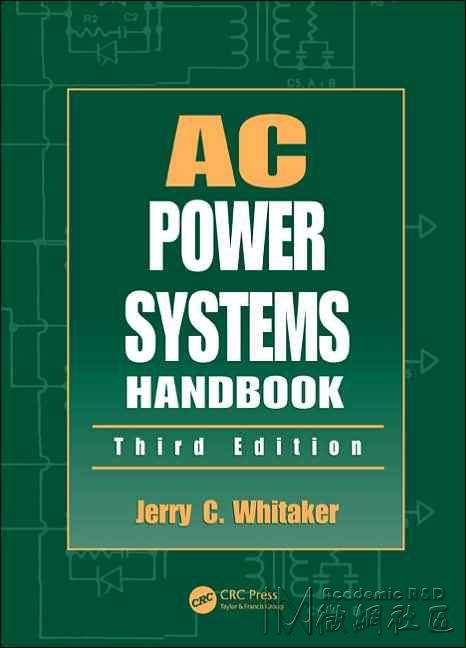
AC
Power Systems
Handbook
Third Edition
Jerry C. Whitaker
Technical Press
Morgan Hill, California
CRC Press is an imprint of the
Taylor & Francis Group, an informa business
Boca Raton London New York
© 2007
Published in 2007 by
CRC Press
Taylor & Francis Group
6000 Broken Sound Parkway NW, Suite 300
Boca Raton, FL 33487-2742
© 2007 by Taylor & Francis Group, LLC
CRC Press is an imprint of Taylor & Francis Group
No claim to original U.S. Government works
Printed in the United States of America on acid-free paper
10 9 8 7 6 5 4 3 2 1
International Standard Book Number-10: 0-8493-4034-9 (Hardcover)
International Standard Book Number-13: 978-0-8493-4034-5 (Hardcover)
Library of Congress Card Number 2006042620
This book contains information obtained from authentic and highly regarded sources. Reprinted material is quoted with
permission, and sources are indicated. A wide variety of references are listed. Reasonable efforts have been made to publish
reliable data and information, but the author and the publisher cannot assume responsibility for the validity of all materials
or for the consequences of their use.
No part of this book may be reprinted, reproduced, transmitted, or utilized in any form by any electronic, mechanical, or
other means, now known or hereafter invented, including photocopying, microfilming, and recording, or in any information
storage or retrieval system, without written permission from the publishers.
For permission to photocopy or use material electronically from this work, please access
www.copyright.com
(
http://www.copyright.com/) or contact the Copyright Clearance Center, Inc. (CCC) 222 Rosewood Drive, Danvers, MA
01923, 978-750-8400. CCC is a not-for-profit organization that provides licenses and registration for a variety of users. For
organizations that have been granted a photocopy license by the CCC, a separate system of payment has been arranged.
Trademark Notice: Product or corporate names may be trademarks or registered trademarks, and are used only for
identification and explanation without intent to infringe.
 【微网发布】AC Power Systems Handbook-Jerry C. Whitaker: AC Power Systems Handbook Whitaker 3Ed 2007.part2.rar
【微网发布】AC Power Systems Handbook-Jerry C. Whitaker: AC Power Systems Handbook Whitaker 3Ed 2007.part2.rar

 AC Power Systems Handbook Third Edition.pdf (16.78 MB)
AC Power Systems Handbook Third Edition.pdf (16.78 MB)